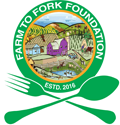Effectiveness of Azorizobial strains isolated from Sesbania rostrata
DOI:
https://doi.org/10.5455/faa.290205Keywords:
Azorhizobium, Sesbania rostrata, nodulation, dry matter yieldAbstract
Isolation and characterization of bacteria were done from the root nodules of African dhaincha (Sesbania rostrata) to study their effects on growth parameters, nodulation and N uptake. Five isolates were obtained from African dhaincha and were identified them as Azorhizobium on the basis of their colony, morphological and biochemical characteristics. A pot experiments were conducted by using 6 treatments, comprising 5 isolates of Azorhizobium and an uninoculated control to evaluate the performance of the isolates. The experiment was laid out in a Completely Randomized Design (CRD) with 3 replications. Azorhizobium inoculation gave statistically higher values for all the parameters viz. plant height, leaf number plant−1, dry weight of nodule, dry matter yield, N content of shoot (%), total N in shoot over uninoculated control (T0). The highest values of all the parameters except stem nodule number plant−1, root nodule weight and N content of shoot were obtained with the treatment T4 (SR-R-4). The total dry matter yield of African dhaincha ranged from 1217 mg plant−1 noted in the uninoculated control (T0) to 5483 mg plant−1 recorded for the treatment T4 (SR-R-4). The total dry matter yields were increased by 138, 219, 273, 351 and 290% over control (T0) due to T1 (SR-R-1), T2 (SR-R-2), T3 (SR-R-3), T4 (SR-R-4) and T5 (SR-R-5), respectively. Total N uptake by shoot of African dhaincha had been influenced significantly due to different treatments and the corresponding percent increases in total N uptake by shoot were 359, 496, 429, 629, and 490, respectively, due to T1 (SR-R-1), T2 (SR-R-2), T3 (SR-R-3), T4 (SR-R-4) and T5 (SR-R-5). Considering all the growth parameters, nodulation, dry matter yield, N content of shoot and total N uptake by shoot, it may be inferred that the isolate SR-R-4 showed the best performance. The isolates SR-R-5 and SR-R-3 were also found promising.
Downloads
Downloads
Published
How to Cite
Issue
Section
License
Copyright (c) 2018 by the author(s). This work is licensed under a Creative Commons.

This work is licensed under a Creative Commons Attribution-NonCommercial 4.0 International License.




















